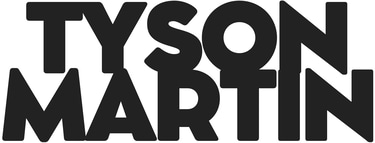Building Security into Play: Frameworks for Safe, Trustworthy Digital Experiences
Security doesn’t have to be the obstacle to innovation. In the right hands, it becomes a transformational foundation.


Building Security into Play: Frameworks for Safe, Trustworthy Digital Experiences
Security doesn’t have to be the obstacle to innovation. In the right hands, it becomes the foundation. For organizations that live at the intersection of creativity, imagination, and digital engagement, embedding security into the product experience isn't just about protecting data, it's about earning and preserving trust.
As digital products become increasingly central to how children and families interact with iconic brands, the responsibility of the CISO evolves. We are no longer gatekeepers who come in at the end. We must be architects of safe play from the beginning.
This post explores how global cybersecurity frameworks can be applied not only to meet compliance but to enrich the design and delivery of digital experiences that are secure, trusted, and aligned with a brand’s core values.
The Stakes: Building for Trust in a Play-Centric World
In industries focused on children, families, and creative engagement, trust is non-negotiable. A single security incident can undermine decades of brand equity. But when done well, security becomes an amplifier of that trust.
Parents don’t just want their children to enjoy interactive experiences—they want to know that the spaces they’re exploring are protected, private, and responsibly managed. That expectation extends to how data is collected, how it’s stored, and how it’s used to enhance the experience.
This creates a high bar for security teams. They must deliver on the technical promise of frameworks like ISO/IEC 27001 or NIST CSF, while ensuring those controls integrate naturally into design thinking, user experience, and platform architecture.
Shifting Left: Security by Design, Not by Patch
The days of retrofitting security at the end of the product lifecycle are over. To build truly trusted experiences, security needs to be present from day one.
Security by design isn’t just a principle — it’s a practice. It means involving security professionals in product design sprints. It means mapping data flows during prototyping, not after launch. It means developers and designers understand not just what needs protecting, but why.
This shift requires a culture where security is not the cost of doing business, but a shared value. And frameworks give us a language to build that alignment.
Translating Frameworks into Experiences
Many organizations treat cybersecurity frameworks as checklists. That misses the point. When done right, these frameworks are tools for building systems that inspire confidence and scale with integrity.
Here’s how some of the most relevant frameworks can be reframed for creative, play-centered environments:
1. NIST Cybersecurity Framework (CSF)
NIST CSF provides a flexible structure for managing cybersecurity risk. In a digital product context, it can be used to:
Identify the types of user data that need protection
Protect interactions with privacy-preserving defaults
Detect anomalies in behavior that could indicate misuse or breach
Respond with user-friendly communication and transparency
Recover with processes that prioritize user trust restoration
2. ISO/IEC 27001
This international standard defines how to manage information security through a structured management system. For digital experiences, it ensures:
Formal risk assessments are done before new features go live
Third-party integrations meet the same security expectations
Controls are mapped not just to systems, but to people and processes
3. Secure Software Development Lifecycle (SSDLC)
Embedding SSDLC principles into design and engineering workflows ensures security testing happens in tandem with development, reducing friction and rework.
4. GDPR and Children's Privacy
Privacy regulations, especially those relating to minors, should be treated as design constraints that spark innovation. Build-in parental controls, create data minimization strategies, and communicate privacy in ways that are age-appropriate and accessible.
Partnering with Product and Design Teams
Security teams can no longer live in isolation. In companies which thrives on collaboration and creative iteration, the CISO must act as a bridge.
That means speaking the language of product. Understanding sprints, user testing, and creative timelines. It means sitting in brainstorms and asking: “How might we build trust into this?”
When security leaders are present early, they become enablers, not blockers. They help avoid rework. They spot risks that others miss. And they help the product team meet standards while creating experiences that feel seamless and safe.
Making Security Visible (In the Right Ways)
The best security is often invisible to the end user. But sometimes, making it slightly visible reinforces trust.
Examples include:
Transparency around data usage (e.g., "Here's what we collect and why")
Age-appropriate security cues (e.g., padlocks, shields, or helpful avatars that guide users)
Parental control dashboards that are intuitive, not intimidating
Real-time notifications when new devices are used or new content is accessed
When users (especially parents) can see that care has been taken, their confidence in the platform grows.
Measuring What Matters
To sustain a security-by-design approach, it must be measured and reinforced. That means tracking:
% of features that go through threat modeling before development
Time-to-resolution for security issues during QA
User trust scores or satisfaction feedback relating to privacy controls
Compliance audit pass rates tied to release cycles
Security metrics should live alongside product and engagement metrics—not below them. This signals that security is part of the value equation, not just overhead.
Culture Is the Real Control
No framework works without people who care. Security culture must be built from the inside out.
For an organization like LEGO, culture is already a strength. The opportunity is to extend that strength into how teams think about digital safety and user trust. That includes:
Embedding security champions in creative and engineering teams
Making security awareness part of onboarding and leadership development
Celebrating examples where secure thinking enabled better outcomes
When teams feel ownership of security, the frameworks follow naturally. They become shared tools, not imposed checklists.
Final Thoughts: Why It Matters
For companies whose brand is built on creativity, play, and global trust, the cost of a security failure is more than financial. It’s personal. It affects how families feel about engaging, exploring, and imagining within your digital world.
By weaving established frameworks into the creative process—and aligning them with your culture, values, and user experience, security becomes part of the brand promise. It shows users that their safety and trust aren’t afterthoughts. They’re engineered in.
And that’s how you build security into play.
About the Author
Tyson Martin is a seasoned cybersecurity and technology executive who has helped global brands transform trust, compliance, and complexity into strategic growth. He writes about digital trust, leadership, and building security into experiences that scale.
